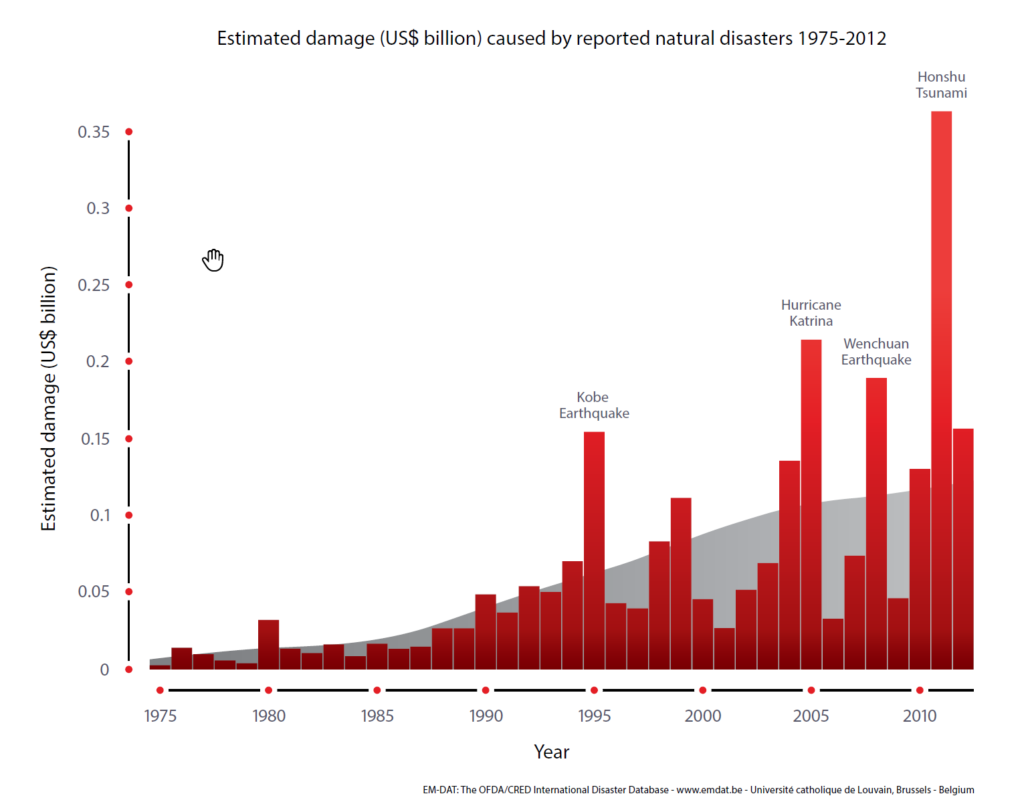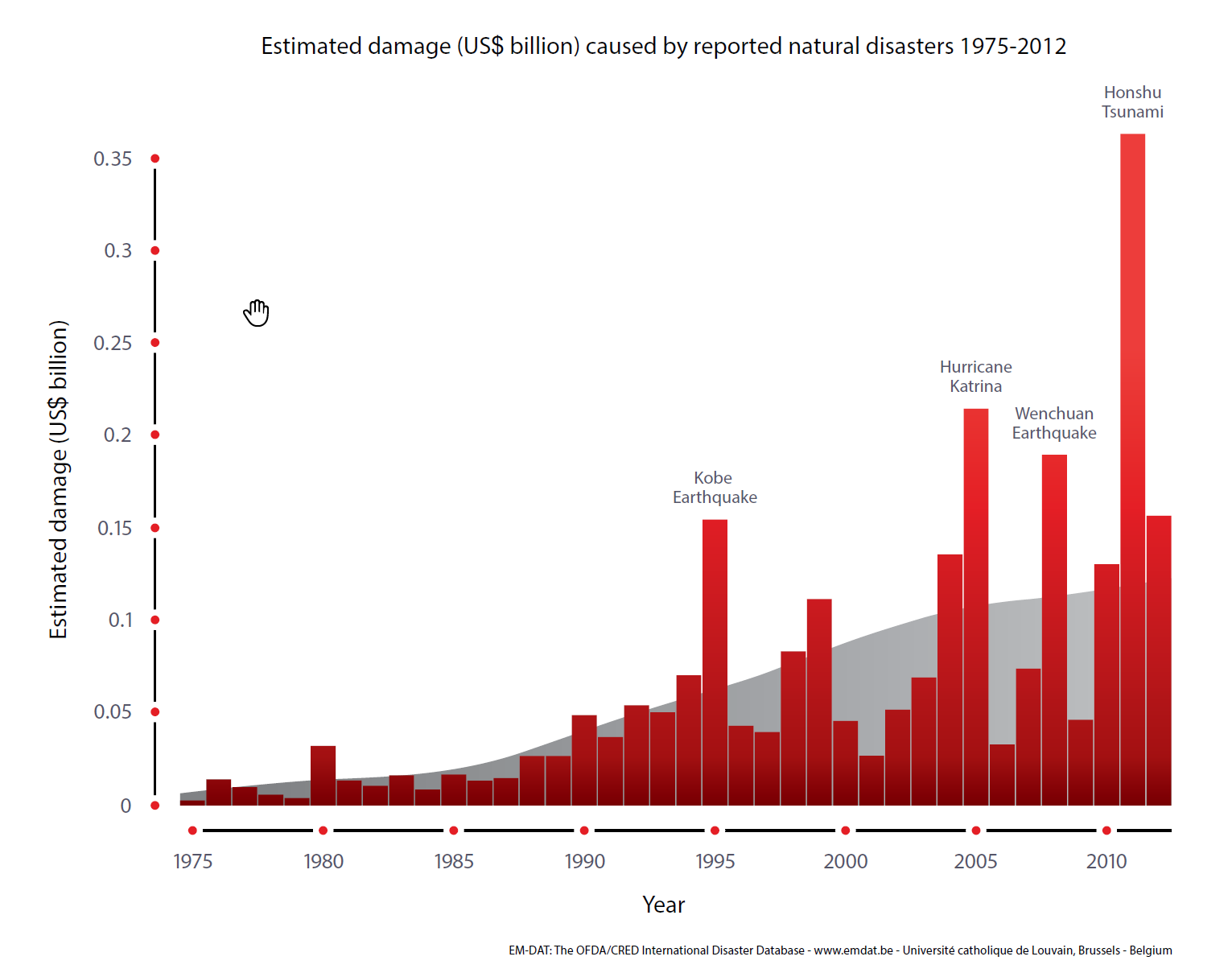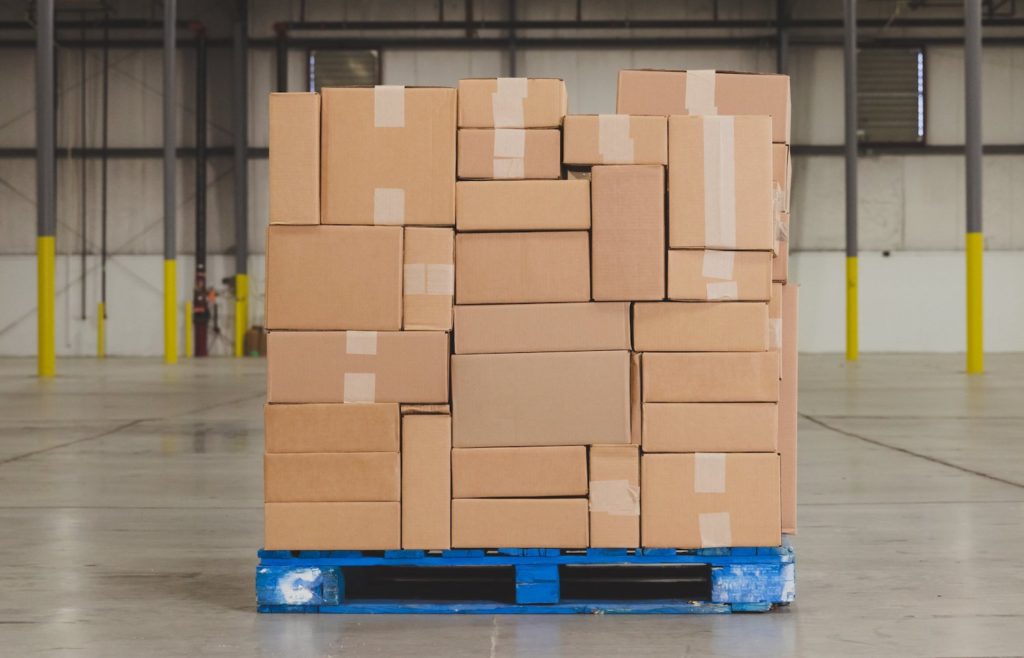
Supply Chain Risk Management: Best Practices
How can you help your supply chain better manage risks–from natural disasters to factory fires? Read on…
Even “Small” Disasters Can Cost Your Company Millions
Over the past century, the number of natural disasters reported have increased significantly. The number of people affected by them and the cost of damage have also increased. (Source: EM-DAT)

For example, in 2000, lightning during thunderstorms caused a small fire in Philips’ chip factory in Albuquerque. The fire was put out within 10 minutes. Ericsson, a Swedish telecom company 4,000 miles away, depended on the factory as the sole source of many radio frequency chips. Ericsson experienced a production loss of $400 million and a share price loss of 14 percent—all due to a 10-minute fire!
Here’s a more recent example. The Polar Vortex winter of 2013 hit Chicago, a major logistics hub for North American shippers. Temperatures plummeted, cargo froze, and rail lines cut their train lengths in half. Intermodal operations came to a grinding halt. This chokepoint put hundreds of millions of dollars worth of inventory at risk. It also caused stockouts and disappointment during the critical holiday season.
This exposure repeated itself during the extreme winter of 2017-18. Multiple Nor’easters punished the New York and greater New England region. A single weekend storm drove temperatures far below zero. Tens of millions of dollars worth of temperature-sensitive cargo sat at-risk at the Port of New Jersey, awaiting drayage.
Don’t Wait For A Disaster to Implement Your Continuity Plan
As recently as 2013, only one in six small businesses had business continuity plans in place. Disasters have already cost governments and businesses $2.5 trillion so far this century. Not having a supply chain risk management plan puts your business at risk!
Enterprises are beginning to adopt standardized Enterprise Risk Management (ERM) practices. However, the risk management industry is still relatively nascent.
The problem? Many executives only realize the importance of risk management after an event strikes. This creates disappointed customers, unnecessary downtime, property damage, loss of revenue, or even loss of life.
Your Risk Strategy Should Cover “Improbable” Events
By definition, disasters are rare but have severe consequences. A Deloitte study found that many of the greatest market losses were from extremely improbable events. Companies failed to consider these improbable events in their risk strategies.
Taking a chance that “it won’t happen to me” is not an effective or reliable risk management strategy!
As environmental risk becomes more prevalent, businesses can no longer ignore preparation. They must establish, test and continuously update effective risk management plans. This is the only way to minimize disruption from uncontrollable events.
Planning for Transportation Management Risk
Part of an environmental risk or business continuity plan is establishing when to activate the plan. At what point does an impending disaster require these actions?
- Communicating with upstream suppliers and downstream vendors
- Closing facilities
- Rerouting supplies
- Expediting parts
- Opening an intermodal yard to make last minute changes
- Evacuating
Without a plan that clarifies which actions to take, managers may take unnecessary measures when there is no real risk. In other words, they end up crying wolf!
In a digital supply chain, data automatically drives decision-making as much as possible. Digital supply chains rely on data to make decisions. It’s critical to have a quantifiable, digital method of determining when a risk calls for action.
Moreover, how does this action relate to an existing workflow? What business processes need to be updated so algorithms can make decisions as easily as managers?
Supply Chain Risk Management Can’t Just Be Seasonal
Weather-related disasters can occur in any season. There’s no “time off”; digital supply chain planners must develop and maintain a year-round environmental risk plan.
Though some companies focus their risk strategies on tropical storms, other weather events can be impactful as well.
Annually, the United States has an average of four catastrophic winter storms ,and more than 1,200 tornadoes. These generate a range of costly emergencies. To name just a few: communication failures; property damage; power outages.
Just one event can have catastrophic effects. For example, an EF5 tornado near Moore, Oklahoma in the spring of 2013 killed 24 and injured 377. It leveled schools and homes, causing an estimated $1.5 to $2 billion in damages.
How should your supply chain respond to such an event? Has your company considered partnering with agencies such as the American Logistics Aid Network?
When digital supply chain techniques meet risk management, we can optimize the use of key resources when it matters most.

Technology and Tools to Help You Manage Your Supply Chain’s Risk
Software tools can help supply chains manage and react to uncontrollable events in a timely manner. Our own Riskpulse Score (RpS) provides a consistent, real-time measurement of risk. The Riskpulse score takes into account social, environmental, and infrastructure hazards.
We help transportation managers compare and quantify levels of risk. Then we work with you to define corresponding mitigations. The risk score can also be weighted by shipment-specific values, like temperature sensitivities. This helps your transportation teams prioritize the best action.
Traditional risk management simply informs long-term risk assessments. However, dynamic planning (where digital meets risk) supports workflows in the here and now. It ties together strategy (business trade-offs) and tactics.
What about the C-suite? Supply chain analysts can also use the RpS as a historical benchmark. Riskpulse can help recommend shifts in high-level strategy.
Which distribution centers, lanes, or carriers have had serious issues? How does their performance compare when adjusted for this adversity? By logging these scores over time, senior management has x-ray vision into how your company is performing.
Measure, then Automate
Measuring risk and responding to risk sets the stage for increased automation. A traditional Transportation Management System (TMS) is built to flag exceptions up to team members. Many of these exceptions can be handled automatically by a digital supply chain with dynamic planning.
For instance, you may have a manual process now to identify at-risk suppliers. Risk management software can help you analyze the data and automatically pinpoint these issues. Less digging through spreadsheets for you–and you can perform your job more efficiently.
Riskpulse uses prescriptive analytics and learning loops to intelligently recommend actions. This frees members of your team to focus on the truly “exceptional” exceptions where human analysis is needed.
In the future, software will help us determine risk automatically, so we can continue charting the best course as operators.
Would you like a demo of how Riskpulse can help manage your supply chain risk? Contact us today!



